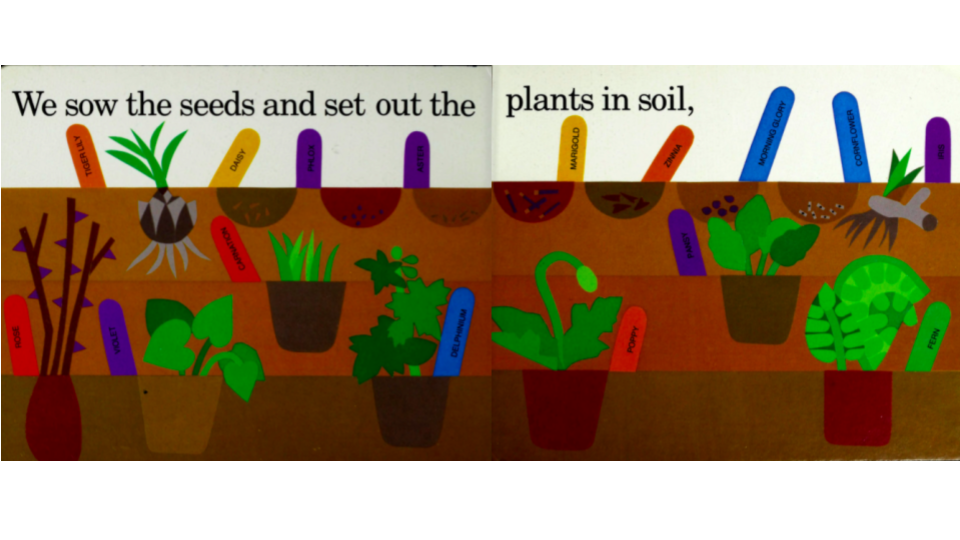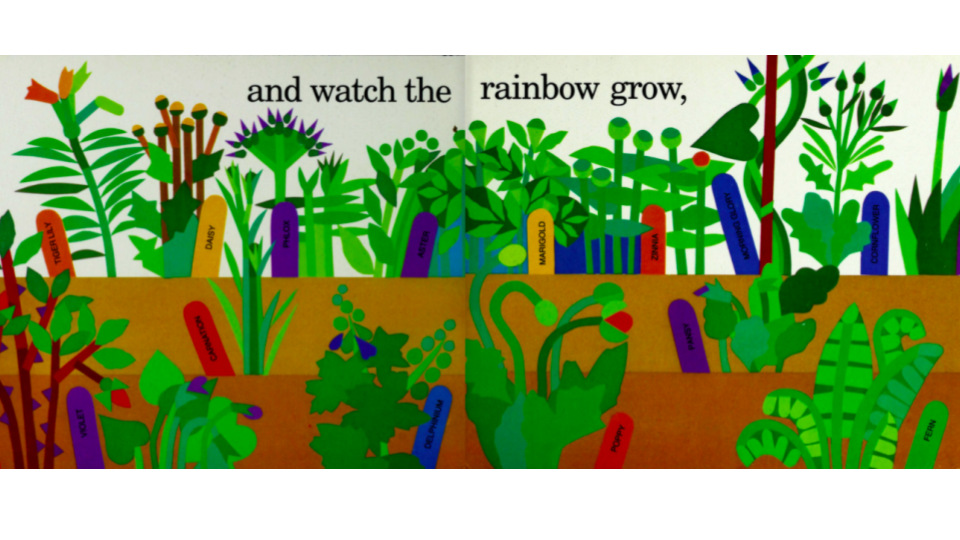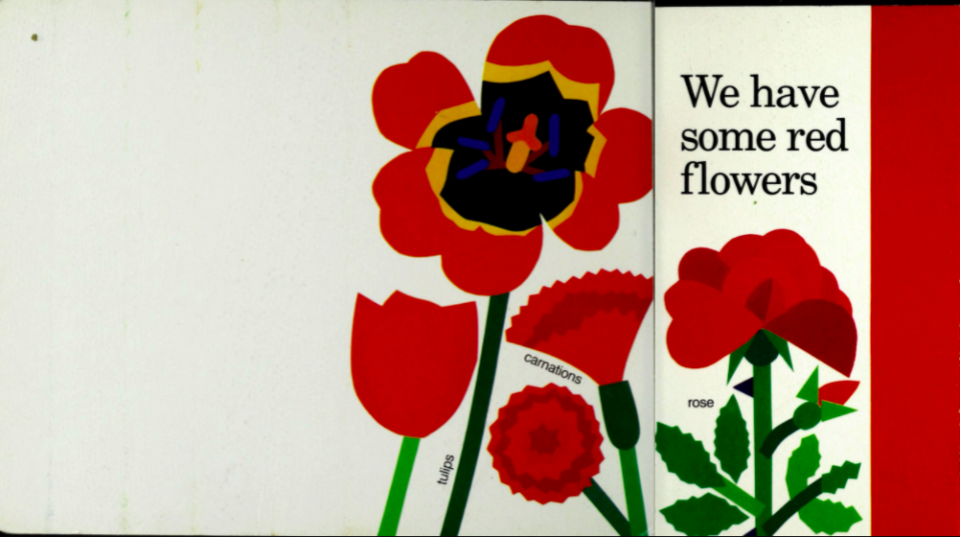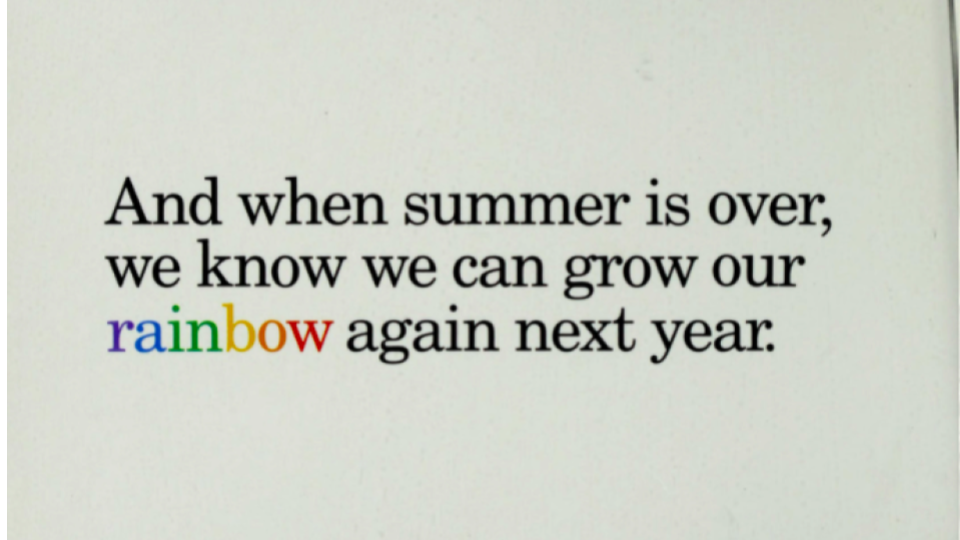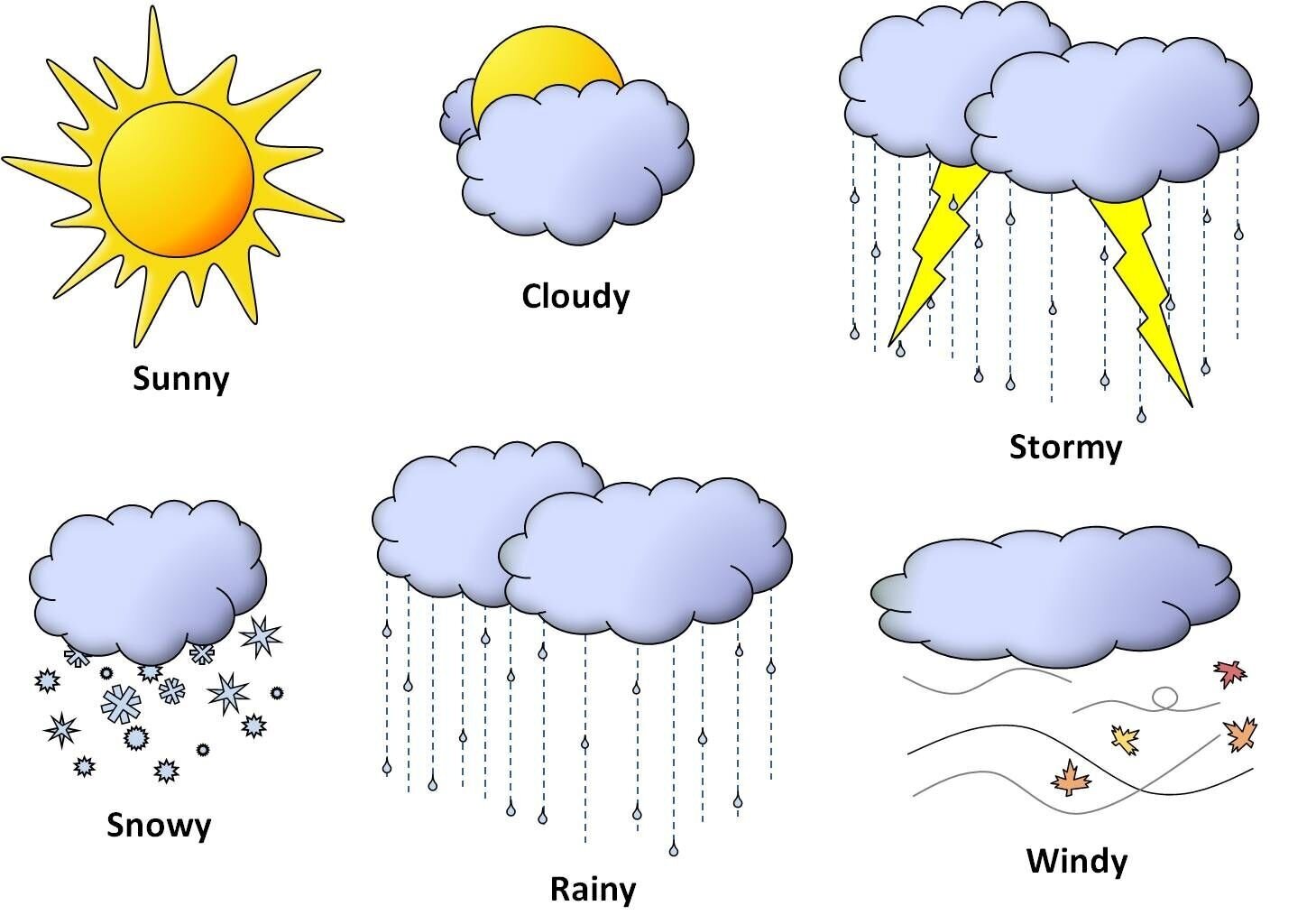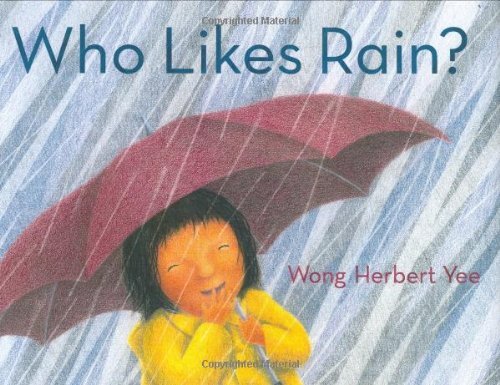Spring Lesson Plan
Author: Kimberly “Kimi” Ramos, Executive Assistant Director
Our days are getting warmer and longer. That means spring is finally upon us!
To celebrate the new season, we created a spring-themed lesson plan including six ideas to ensure bounds of fun with your child. These activities are perfect for developing language, social, and motor skills in young children at home.
#1) Song: “Spring is Here” (5 minutes)
This song uses simple vocabulary and lyrics to teach children about things they might see in spring. Have children listen to and/or watch the music video. After listening or watching, ask your child, “How do you know spring is here?” and have them recall elements from the song.
#2) Introduction: Spring Sensory Scavenger Hunt (15 minutes)
The Spring Scavenger Hunt is a unique way to get kids interacting with the outdoors. This activity involves asking your child questions that prompt them to notice details about the world around them. It’s best done while in your yard or while going on a walk around your neighborhood or the park.
Questions to ask your child and possible answers:
What do you see in the spring? Plants growing, trees turning green, worms crawling
What do you smell in the spring? Flowers blooming, mowed grass, soil in the garden after a rain
What do you taste in the spring? Fruits, ice cream, chocolate eggs
What do you hear in the spring? Birds singing, bees buzzing, rain pattering
What do you feel in the spring? Rain falling, sun beaming, wind blowing
#3) Warm-Ups: Spring Actions (10 minutes)
This activity involves giving your child simple directions to activate their listening skills and warm up their bodies. This will also foster age-level vocabulary and imagination.
To incorporate spring imagery, cut out flower shapes in different color construction paper. Next, attach each flower to a popsicle stick to resemble a stem. Then, write each of the following actions on a flower cut-out. Lastly, place the flowers in a small flower pot or stick them into the ground in your backyard. Have your child pick a flower and they must complete the instruction on it. Model the action for your child to follow or encourage them to use their imagination to think of what each action looks like.
Spring actions:
Leap like a frog
Waddle like a duck
Fly like a bird
March like ants
Reach like a tree
Grow like a flower
Spin like a pinwheel
Arch like a rainbow
Fall like the rain
Blow like the wind
Jump in the puddle
Rise like the sun
#4) Dance: “Springtime Dance” (5 minutes)
This fun and upbeat song and dance includes a simple spring-themed routine that children of all skill levels can do.
#5) Story Time: “Planting a Rainbow” (10 minutes)
“Planting a Rainbow” is a vibrant and bright book that tells the story about a child and their mother’s love for gardening in the springtime. This story is a fun way to expand vocabulary and teach colors, the plant life cycle, and names of plants and flowers.
“Planting a Rainbow” Read Aloud Video
#6) Action song: “Making a garden” (5 minutes)
This action song is the perfect activity to follow our “Planting a Rainbow” story time and can be completed in a sitting position on the floor. It includes simple actions that children can see and copy. Actions include digging a hole, planting a seed, watering it, seeing it grow, and picking a flower. My favorite part is the cute chorus: “Making a garden we all can share!”
Rainy Day Lesson Plan: 5 Activities to do While Staying Dry Inside
Author: Kimberly “Kimi” Ramos, Executive Assistant Director
Whether it’s rain, cold weather, or a pandemic keeping you and your family at home, children are left feeling restless and bored stuck inside the house. If you’re out of ideas to keep your child entertained, you’ve come to the right place!
Here is a 1-hour lesson plan including 5 rainy day activities to promote child social-emotional, motor, and language skills that you can do with your child.
#1) Emotions Check-in: PErsonal weather report
(10 minutes)
It may be difficult for your child to identify and express their emotions. I like this personal weather report to check-in with students about how they are feeling. This provides them with relevant visuals and the language to describe their current internal state. Ask your child questions like: “Are you feeling happy like a sunny day? Are you feeling sad or tearful like a day with rain showers? Are you feeling tired like a gloomy day with overcast? Are you overwhelmed or anxious like a blustery windy day?”
It is also important to teach your child that much like how we cannot control the weather, sometimes we must sit with our feelings instead of trying to change them. There is no such thing as a “good” or “bad” feeling. Each emotion is normal part of life that comes and goes. Even if your personal weather report is stormy with downpours today, there is a bright and sunny day tomorrow.
#2) Warm Ups: Rainy day actions (10 minutes)
Give your child simple directions to follow to warm up their listening skills and their bodies. These will also encourage vocabulary and imagination.
Shine like the sun: Standing up, extend both arms overhead until palms of your hands meet. Lower hands in front of your chest.
Fall like rain: Extend both arms straight up. Wiggle fingers or shake hands while bending over until hands meet the floor.
Blow in the wind: Place on foot against the inner ankle, calf, or thigh of your other leg. While keeping hands on your hips, gently sway side-to-side. Careful not to let the wind knock you down. Switch feet.
Clap like thunder: Stomp your feet while clapping your hands together. Bring your knees as high as you can to make your thunder boom even louder.
Splash the puddle: Jump up and down.
Stretch like a rainbow: With your feet shoulder-width apart or farther, lean to your left with your right arm extended overhead. Switch arms then sweep your left arm up and across to reach toward the right side. Every time you switch arms/directions, have your child name a different color of the rainbow.
#3) Dance: “Drip Drop rain” (5 minutes)
This is the upbeat song incorporates body parts (head, shoulders, tummy, and toes) and relevant vocabulary to teach balance and coordination. The repetitive lyrics and simple movements make this dance accessible for children of many ages and skill levels. To encourage pretend play and have even more fun, have your child put on their raincoat while dancing and singing along!
#4) Story time: “Who likes rain?” by wong yee (15 minutes)
“Who Likes Rain” by Wong Herbert Yee is a great book to read to children on a rainy day. It is about a girl who ventures outside to explore who does and who doesn’t like rain. Animals like fishes and frogs love the rain, but dogs and cats do not. This story is filled with fun rhymes and lyrics that are sure to keep the little reader engaged.
Video Read-Aloud of “Who Likes Rain?”
#5) Art project: paper plate rainbow (15 minutes)
There’s nothing better than an art project to keep your child busy while also exploring colors and textures. This project uses items that you may already have at home!
Materials Needed
Paper plate
Cotton balls
Liquid glue
Tweezers or clothespins
Strips of colored paper
Activity
Cut the paper plate in half OR into the shape of a cloud
Glue all of the colored strips along one edge of the “cloud”
Cover the rest of the “cloud” in glue
Use the tweezers/clothespin to pick up cotton balls and place them onto the cloud
Leave in a safe place to dry
Visit our page Art Project Lesson Plans to find more themed art projects that you can do at home with your child!
MAGIC Buddies: Building Community through Peer Mentorship
Author: Kimberly Ramos, Assistant Executive Director
Beyond the obvious health risks that COVID-19, the pandemic has undoubtedly impacted children’s mental health and well-being. School closures have resulted in a new era of learning and relationships that some students still have difficulty navigating. As a result, it is important to provide children with opportunities to connect with their peers in order to nurture their social and emotional needs.
Our solution:
Peer mentorship for children with intellectual and developmental disorders (IDD)
what is peer mentorship?
Peer mentorship is an intervention used to improve social skills and increase the number of interactions between children with autism spectrum disorder (ASD) and their neurotypical peers. Typically developing children are explicitly taught strategies to engage in positive social interactions with individuals with ASD.
Why is peer mentorship important?
Peer mentorship promotes awareness, acceptance, and prosocial behaviors. Elementary school students who were part of an integrated classroom had a more accurate understanding of autism spectrum disorder (ASD) and greater empathy towards a hypothetical student with ASD compared to students who had no contact with peers with ASD (Mavropoulou & Sideridis, 2014).
““Behavior is communication. Change the environment and behaviors will change.””
In other words, students increase knowledge and social acceptance of peers with disabilities when given opportunities to interact with each other. In turn, children with ASD and other IDD’s develop improved social skills, a sense of belonging, and a more positive self esteem.
When we create a safe and inclusive learning environment that supports the social and emotional development of each and every child, we see increased connection, communication, and community.
What is MAGIC Buddies?
MAGIC Buddies was established in September 2019 and is MAGIC Dance Arts’ peer mentorship program for children ages 9-14. Buddies learn effective communication skills, the importance of empathy, and respect for diversity and differences. In addition to participating in class alongside MAGIC students, Buddies will further be educated about aspects of autism, including sensory needs or behaviors a peer may exhibit. We encourage Buddies to recruit their friends and classmates to join our mission and become a part of a community that celebrates the uniqueness of each individual.
*Due to COVID-19, all opportunities with MAGIC Buddies are virtual.
How can my child become a MAGIC buddy?
We will have the very first MAGIC Buddies Orientation on Saturday, March 27 at 1PM (PST) via Zoom. To make sure your child is a part of this training event, visit our website and submit your application today: https://www.magicdancearts.com/buddy-home.
Sources
Mavropoulou, Sophia, & Sideridis, Georgios D. (2014). “Knowledge of Autism and Attitudes of Children Towards Their Partially Integrated Peers with Autism Spectrum Disorders.” Journal of Autism and Developmental Disorders, 44(8), 1867–1885. https://doi.org/10.1007/s10803-014-2059-0
Tichenor, Keri (2016). "The Effects of Peer Mentoring on Students with Autism Spectrum Disorder," Inquiry: The University of Arkansas Undergraduate Research Journal. 20(8). Available at: http://scholarworks.uark.edu/inquiry/vol20/iss1/8
How to Change Your Zoom Display Name to Your Student's Name
Why change your Zoom Display name?
In preparation for virtual dance classes, we kindly ask that the adult Zoom account holder changes their display name to that of the student signed up for class.
This matters because:
It promotes safety and allows for identity verification. Unknown or unidentified persons will not be permitted to enter or remain in the virtual classroom due to security reasons.
It helps your child recognize their own name. Most children learn to recognize letters between the ages of 3-4, starting with those of their name. Time spent changing your display name to your child’s name can be used as a opportunity to develop letter and word recognition.
It encourages students to learn each other’s names. Learning someone’s name is the first step to building a friendship, which is especially important within the online setting. Children will be interested in and learn to memorize their peers’ names. Students can state their peer’s name to gain their attention, share a comment or to make a connection with them, which are all important social skills.
It fosters community and communication. Our teachers learn each and every student’s name and consistently provide encouragement and praise throughout class. Having a student’s name displayed and accessible from the beginning of class allows the teacher to connect with them. This allows the student to feel seen, heard, and accepted. When this happens, the student feels comfortable and safe enough to learn, try new things, and have fun!
We understand that changing your display name requires additional time on your part. Thank you for your cooperation in making MAGIC virtual dance class safe and enjoyable.
How to change your Zoom display name
For this demonstration, the adult Charles Brown will be changing their display name to that of their daughter named Charlie.
Changing your display name before class
Log into Zoom. Click on the icon with your initial in the top right corner.
2. Click on “Settings.”
3. Under the “Profile” section, click on “Edit My Profile.”
4. An internet page will open. Click on “Edit” by your name.
5. Delete your current display name.
6. Type in your student’s name. Make sure to click “Save Changes” when you’re done.
You’re all done!
Changing your display name during class
Click on anywhere within your square.
2. Click on “Rename” from the drop-down list.
3. Delete your name and type in your student’s name. Click “Rename” to save.
You’re all done!






